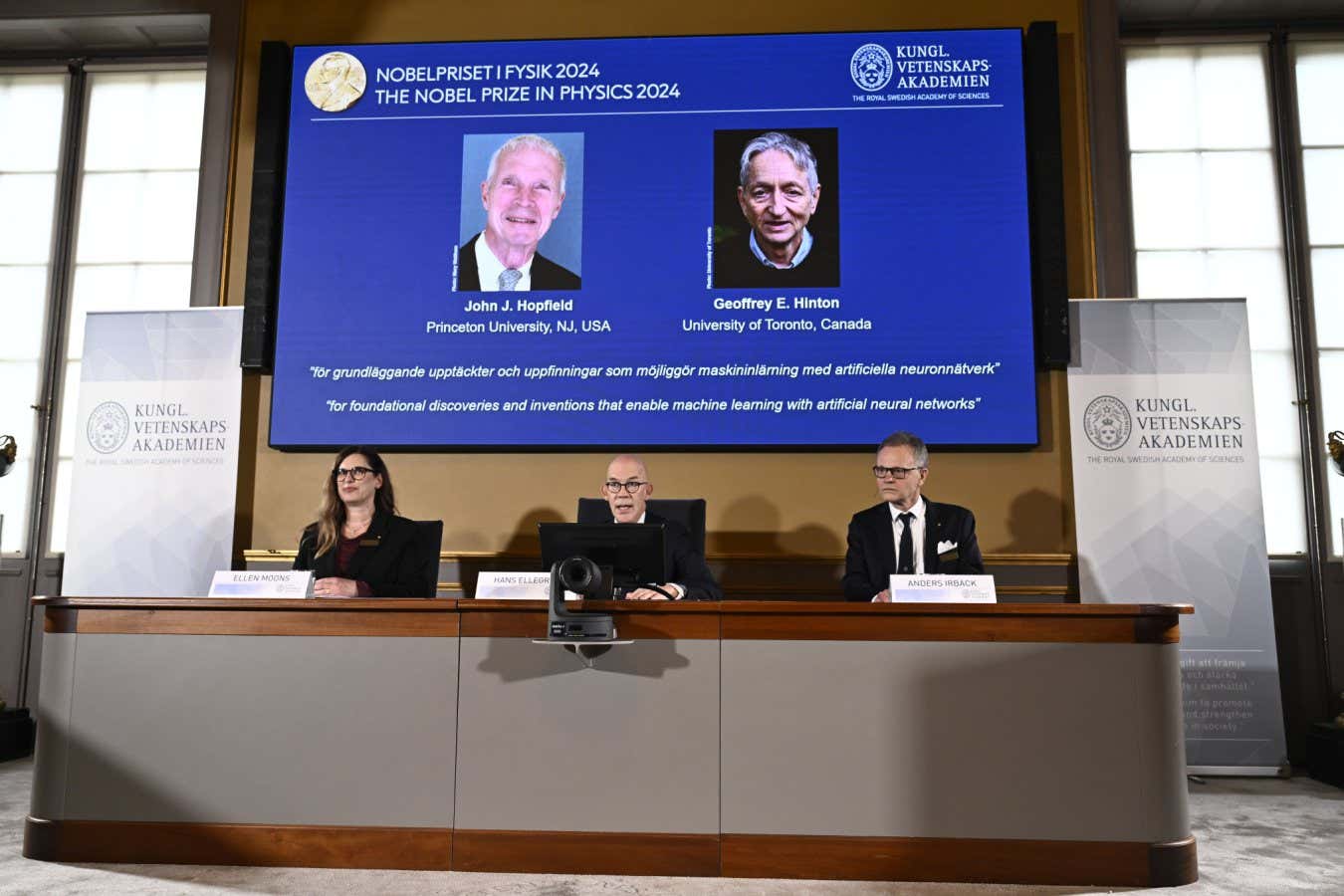The 2024 Nobel prize in physics has gone to John Hopfield and Geoffrey Hinton for discoveries that enabled machine learning and are key to the development of artificial intelligence models like ChatGPT
By Alex Wilkins
8 October 2024
John Hopfield and Geoffrey Hinton share the 2024 Nobel prize in physics
Christine Olsson/TT/Shutterstock
The 2024 Nobel prize in physics has been awarded to John Hopfield and Geoffrey Hinton for their work on artificial neural networks and the fundamental algorithms that let machines learn, which are key to today’s large language models like ChatGPT.
“I’m flabbergasted, I had no idea this would happen,” Hinton told the Nobel committee upon hearing the prize announcement. “I’m very surprised.” Hinton, who has been vocal about his fears around the development of artificial intelligence, also reiterated that he regretted the work he had done. “In the same circumstances, I would do the same again, but I am worried that the overall consequences of this might be systems more intelligent than us that eventually take control,” he said.
How this moment for AI will change society forever (and how it won't)
There is no doubt that the latest advances in artificial intelligence from OpenAI, Google, Baidu and others are more impressive than what came before, but are we in just another bubble of AI hype?
Advertisement
While AI might not seem like an obvious contender for the physics Nobel, the discovery of neural networks that can learn and their applications are two areas that are intimately connected to physics, said Ellen Moons, chair of the Nobel Committee for Physics, during the announcement. “These artificial neural networks have been used to advance research across physics topics as diverse as particle physics, material science and astrophysics.”
Many early approaches to artificial intelligence involved giving computer programs logical rules to follow to help solve problems, but this made it difficult for them to learn about new information or encounter situations they hadn’t seen before. In 1982, Hopfield, at Princeton University, created an architecture for a computer called a Hopfield network, which is a collection of nodes, or artificial neurons, that can change the strength of their connections with a learning algorithm that Hopfield invented.
That algorithm was inspired by work from physics that finds the energy of a magnetic system by describing it as collections of tiny magnets. The technique involves iteratively changing the strength of the connections between the magnets in an attempt to find a minimum value for the energy of the system.
